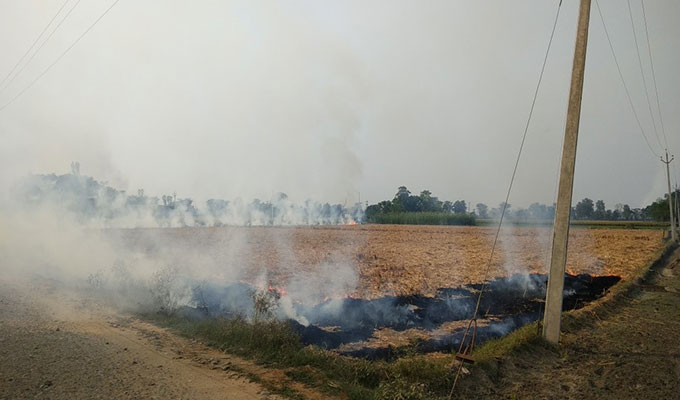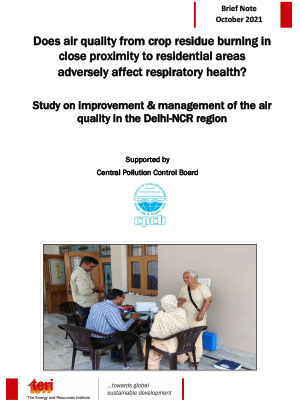Does the air quality from the crop residue burning in the close proximity to residential areas adversely affect respiratory health?

Crop residue burning (CRB) is a recurring problem, especially during the months of October-November, in the north-western regions (Punjab, Haryana, and western Uttar Pradesh) of India. In 2018, TERI initiated a study to assess the rise in cases of respiratory illnesses with a corresponding increase in PM2.5 concentrations in the farming community of six villages in Patiala district of Punjab. This relationship was assessed using respiratory symptoms and lifestyle exposure-based data using survey questionnaires and conducted lung function tests (LFTs) on study population during high air pollution days of crop burning in October -November and low pollution days of March- April in summer months.
As part of the study, we compared respiratory health effects during high air pollution exposure days of crop residue burning with low air pollution exposure days in the farming community. The daily concentration for PM2.5 ranged from 150 to 250 µg/m3 during crop reside burning period and ranged from 60 to 99 µg/m3 on days without crop residue burning. The crop residue burning leads to a spike in the PM2.5 concentrations two to four times higher than the Indian ambient air quality standard (60 µg/m3) daily on an average. Even if a few farmers or some villages resolve to not burn stubble, it will have little or no impact on the presence of particulate matter in the air, and gradually the air from in the neighbourhood becomes toxic for all residents.
The study findings based on statistical analysis seem to suggest that the study conducted on more than 3644 volunteers, which included the young and the senior villagers covering age groups from >10-60 years, during the high exposure days of CRB reported higher per cent of people with respiratory symptoms. The self- reported respiratory symptoms included wheezing, breathlessness on exertion, cough in morning and cough at night or other symptoms such as skin rashes, runny nose or itchiness of eyes. Our analysis shows that nearly twice the number of people reported respiratory complaints during days with high PM2.5 concentrations; this is a significant increase. For instance, we find 26% participants complaining of cough in the morning during high exposure days in comparison to 13% in low pollution period.
The lung function tests, which largely determine total amount of air breathed out, were also conducted. We found significantly lower lung function parameters, particularly in the younger age groups during the crop residue burning period when compared with non- crop residue burning period. More details of this study and key messages can be found here.


